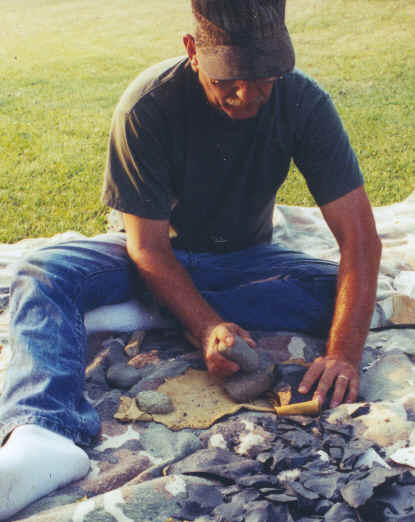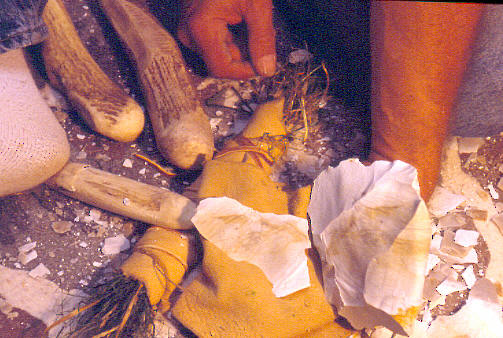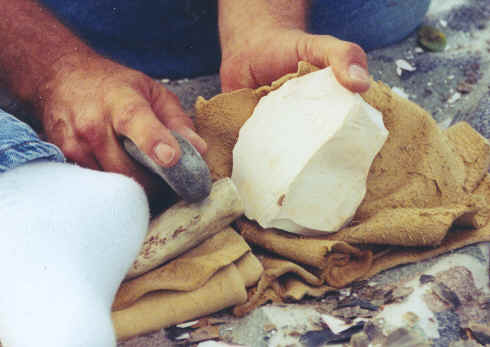|
ABSTRACT:

MIKE DOTHAGER
THE ROCKER-PUNCH
TECHNIQUE
OF INDIRECT PERCUSSION FLAKING
Mike Dothager lives in Vandalia, Illinois and he works as a foreman in a manufacturing
plant in the area. One of his main interests is flintknapping and more
precisely, Clovis stone tool making technology. For the last two or three years
he's been experimenting with an interesting flintknapping method of flake reduction.
He calls this process the rocker-punch technique after Bob Patten's
rocker-punch fluting technique. This procedure is impressive to watch and in fact it might have
even been used by Clovis people to make some of the very large biface cores like
those found on the Anzick site. Mike says that rocker-punching offers a lot
more force with far less expended energy by the knapper.
Further experimentation with this technique by
others and looking for evidence on archaeological sites for similar tools may
give scientists more information to help interpret the past archaeological
record. |




